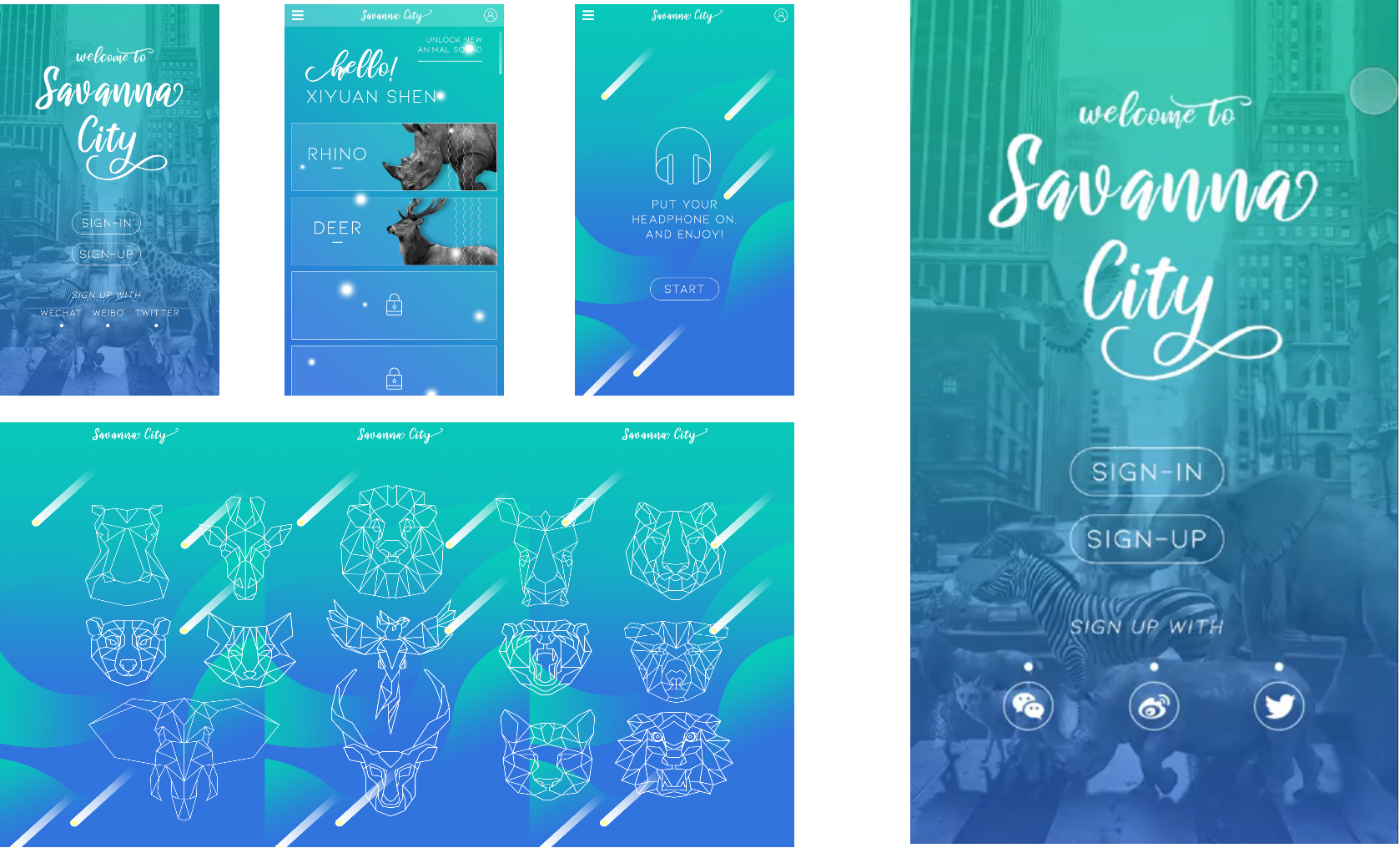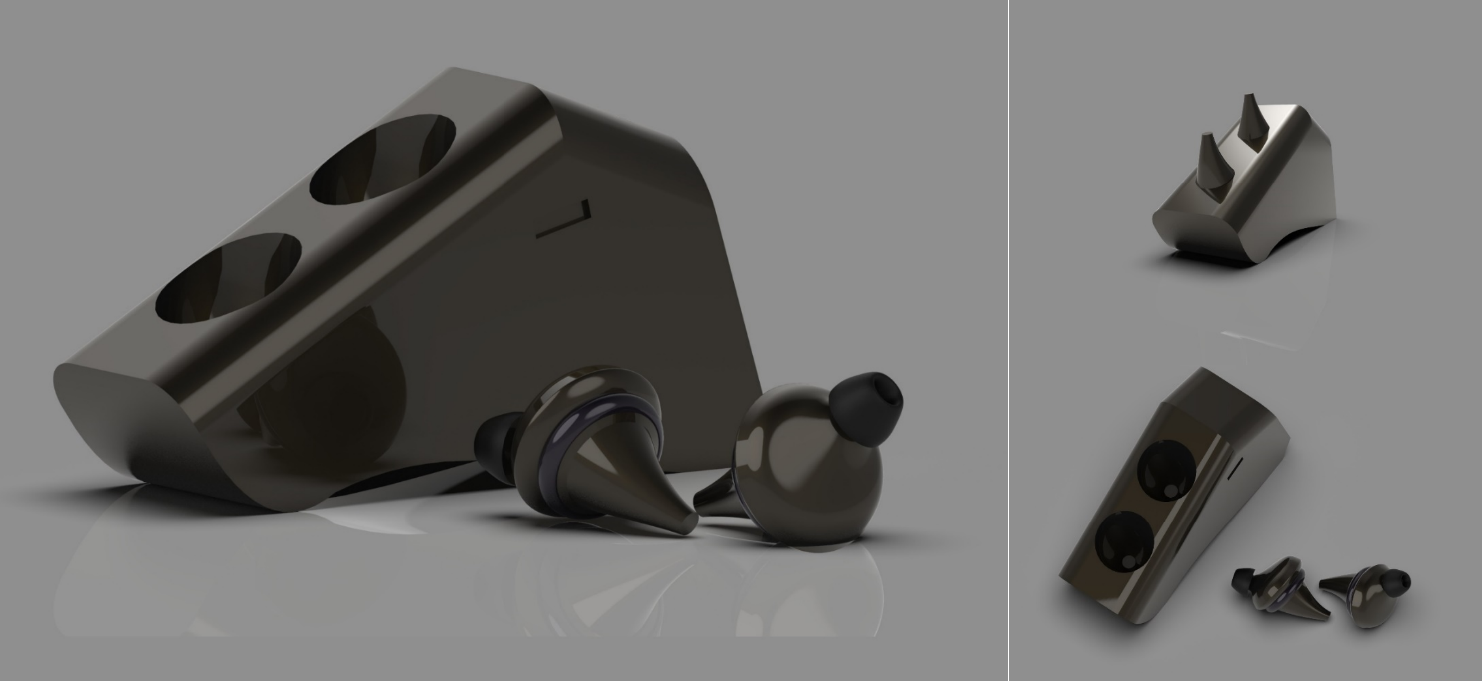Savanna City: Turning Urban Noises into Animal Sound
Keyword: Audio Signal Processing, UX Design, Industrial Design
Due to animal poaching, African wildlife such as rhinos are now endangered. To address this issue, we have developed Savanna City, a mobile app based on auditory interaction. It is capable of recognizing various sounds in urban daily life, such as conversations, cars, subway trains, and bicycles. The app can determine the distance of sound sources and transform them into the sounds of wild animals in the African savannah. By wearing headphones, users can immerse themselves in a sensory experience that makes them feel as if they are actually present in the African savannah.

In addition, the project features a beautifully designed app UI and rhinoceros horn-shaped headphones with a wildlife theme. Our goal is to bridge the gap between urban residents and wild animals by providing an immersive sound experience, thereby raising awareness for wildlife conservation.

For the algorithm implementation, we placed three microphones at different positions on the head-worn headphones to capture sounds from the city. To create the effect of “wild animals passing by,” we first need to locate the sound source. By measuring the time difference of the same sound signal received by the three headphones, we can calculate the position of the sound source. In the second step, we need to identify the specific types of sounds in the city. In an urban environment, the sounds we hear are a combination of various sounds, such as human voices and vehicle noises. Using the Independent Component Analysis (ICA) algorithm, we can separate the different sound sources present in the city into individual components. The human head, ear shape, shoulders, and upper body all have a certain effect in obstructing and filtering sounds, resulting in differences in the sounds heard by the left and right ears. By using the Head-Related Transfer Function (HRTF) algorithm, we can transform the monaural animal sounds obtained earlier into stereo sounds based on the coordinates of the sound sources. This achieves the effect of the sound seemingly coming from around the listener.

